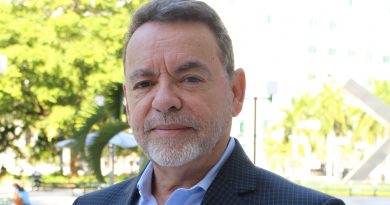Social Upheaval In Cuba Reminds Us Of The Need For Change
Cuba witnessed a rarity on March 17—protests.
Hundreds participated in demonstrations throughout Santiago de Cuba—the island’s second largest city—chanting for electricity and food.
According to a report on NBC News by Ed Augustus, a British journalist based in Havana, tensions in Cuba have been simmering as a result of inflation and lack of fuel.
Although short-lived, the phenomenon echoes the social unrest of the patria y vida (homeland and life) protests in July of 2021 during the COVID-19 pandemic. Thousands of citizens swarmed the streets demanding medical supplies and freedom from communist rule.
Since then, the Cuban government announced the cost of oil would increase 500 percent.
In an article by NPR, Cuban economist Ricardo Torres said that oil powers approximately 95 percent of the island’s electricity.
Although the average salary in Cuba is approximately 14 pesos, it takes an estimated 4,500 pesos to fill a gas tank, as stated by Augustus in a report for NBC news in February.
Venezuela was the island’s main source of fuel, but since that nation’s economic plummet, Cuba has relied on support from Russia and Mexico.
Fuel shortages have also resulted in electricity rations throughout the island, with daily power outages lasting from eight to 18 hours.
Prices in food, which is rationed by the government, have also soared. Egg cartons, milk and chicken cost more than 2,500 and 3,000 Cuban pesos.
But this situation is not new. The Cuban government is notorious for stripping people of power, long before its financial problems.
Cuban nationals blame the United States’ hostile stance against the island—namely the 1962 embargo instituted under former President John F. Kennedy—for their economic strife.
The embargo, commonly referred to as el bloqueo (the blockade), hinders U.S. based companies from conducting business with Cuba. There are exemptions, however, for exporting humanitarian aid, such as food and medicine.
That begs the question—how much aid does the government actually distribute?
The island claims it’s being trampled by a world superpower. Yet, more than one million Cubans who have fled the island since the 1959 revolution sing a different song.
Cuba’s glory days, when the island was a center for international business and private industries, are a distant memory.
To top it off, there is no freedom of expression on the Caribbean island.
An Instagram post by Cubanos por el Mundo, an account dedicated to highlighting the crisis in Cuba, shows protestors being dragged by police officers.
People who are detached from the situation fail to see how Cuba’s critical condition is due to its communist dictatorship.
We need to listen to Cuba’s cry for freedom.




